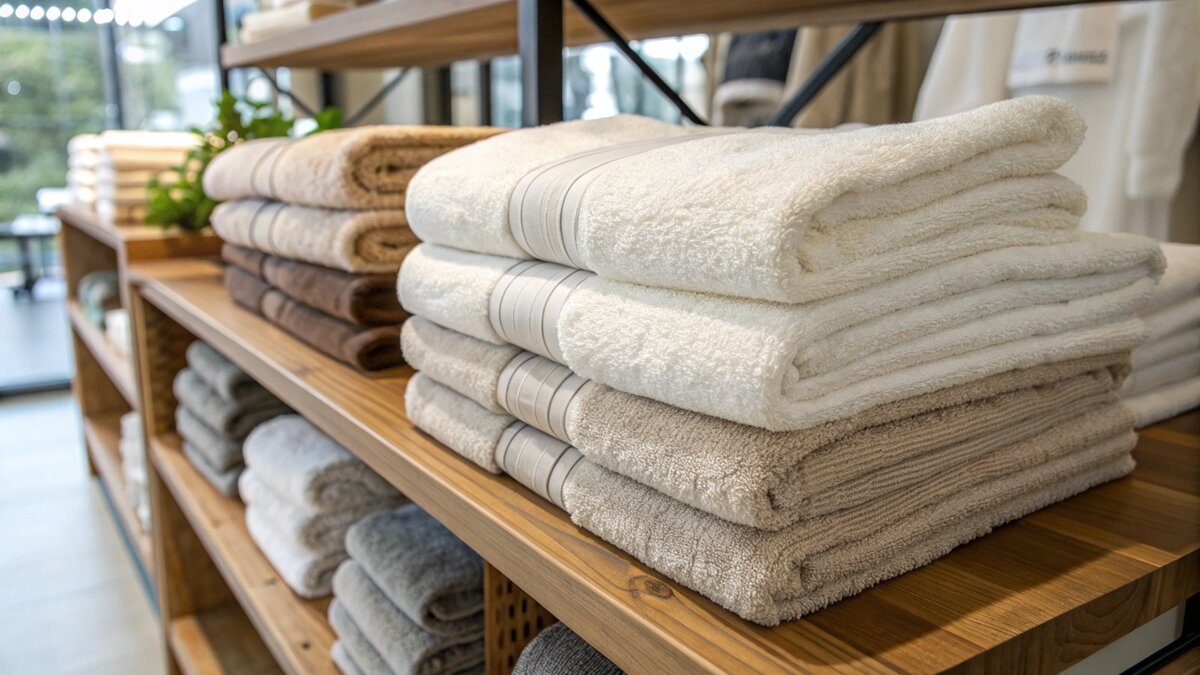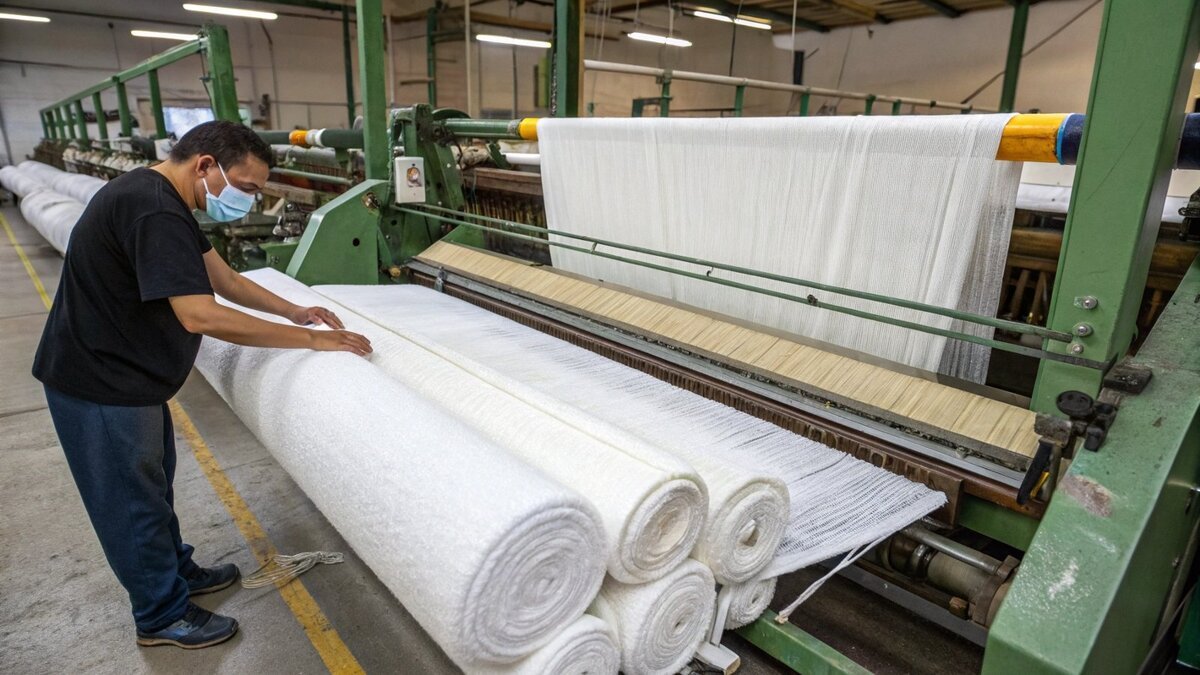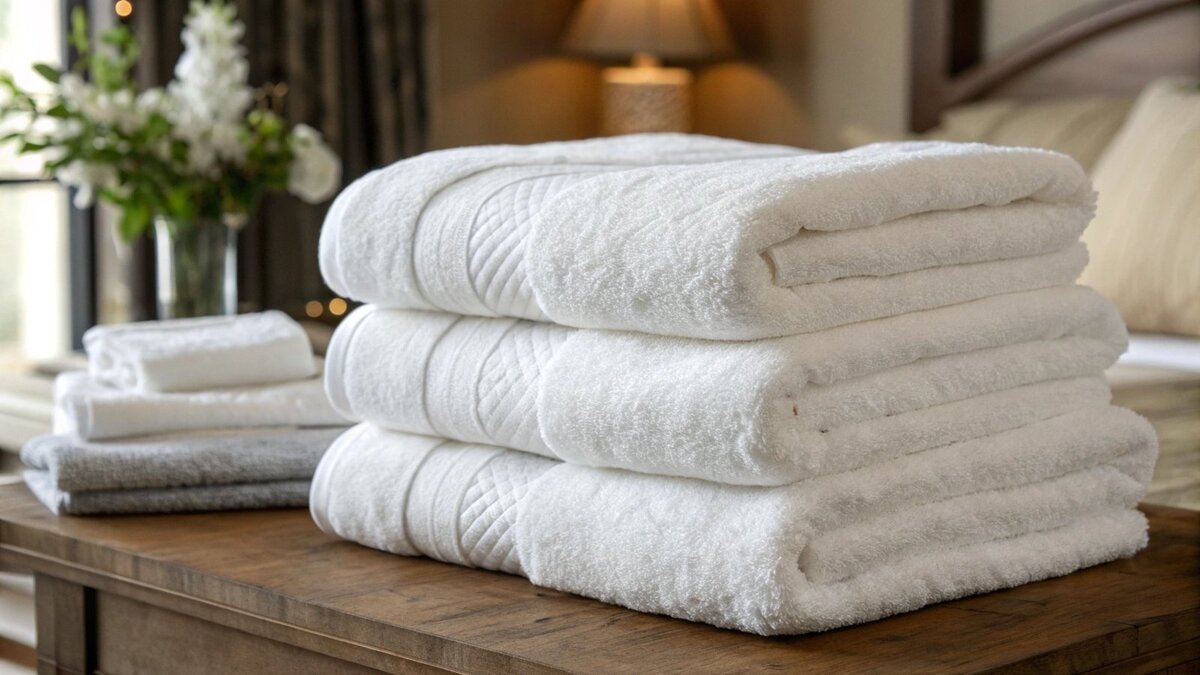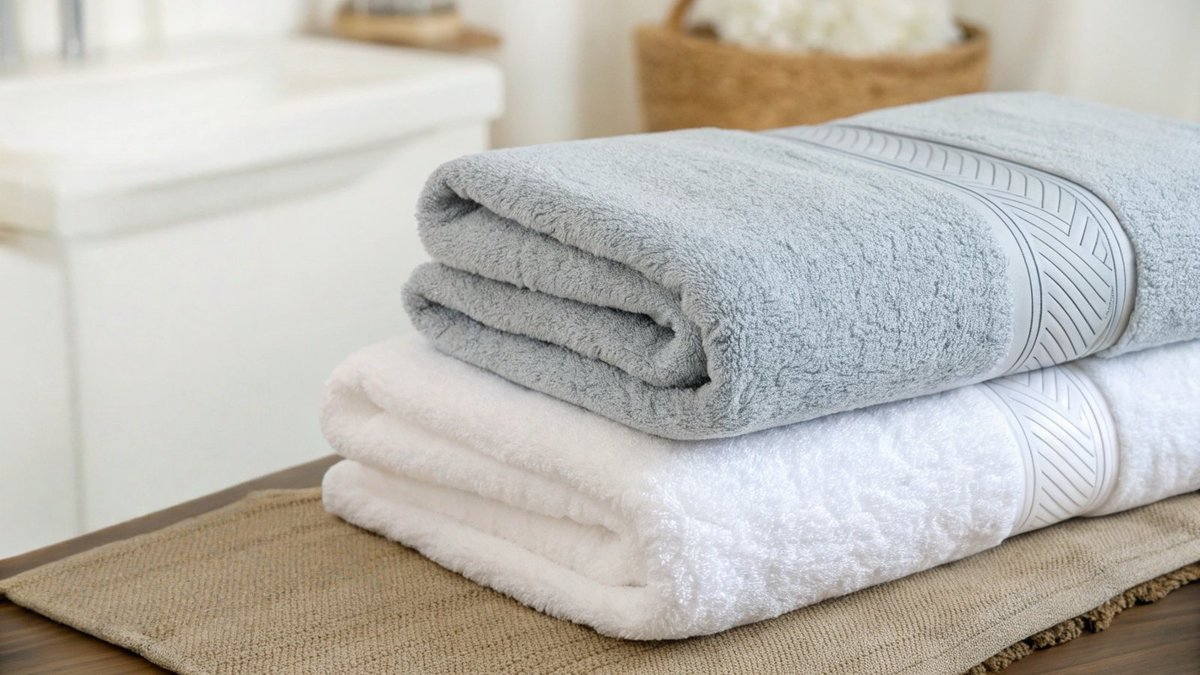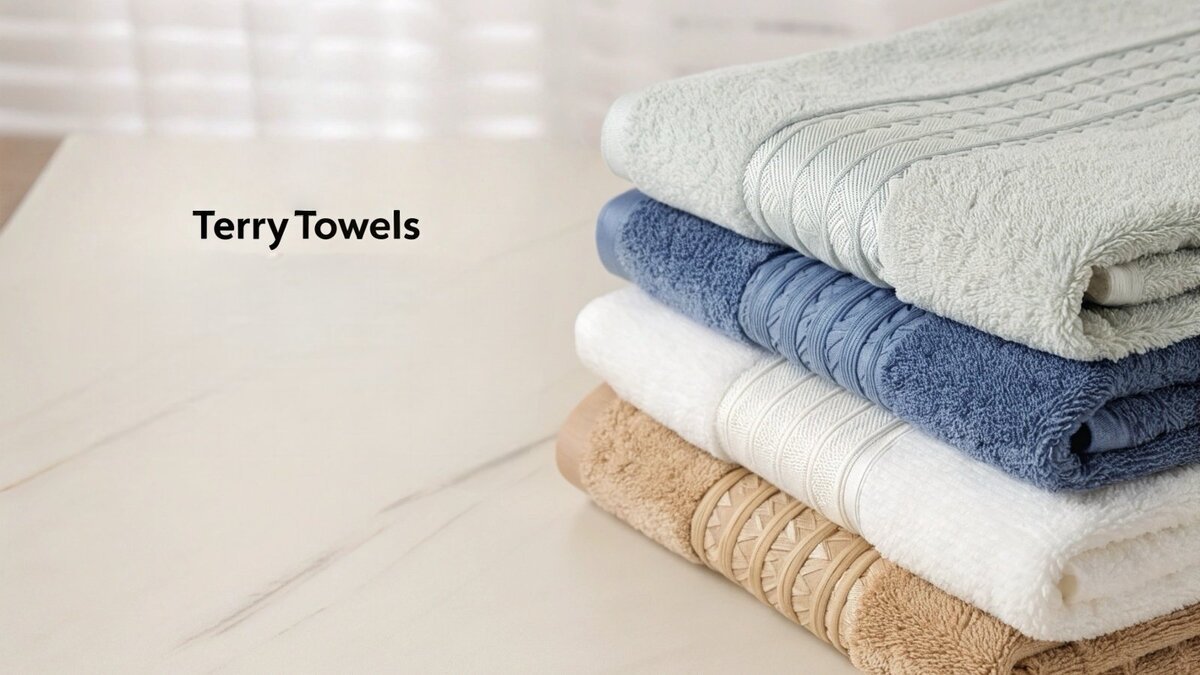Have you ever wondered what makes a quality towel? The manufacturing process seems complex, but understanding it is key. I’ll show you how simple it can be.
The best towels are woven from high-quality cotton yarn into absorbent loops, a fabric known as terry cloth. The C-to-C (cotton to customer) journey involves spinning, weaving, dyeing, and finishing. This structured process ensures every towel is soft, thirsty, and built to last.
Understanding the journey from a simple fiber to a finished product is so important. When I first started in this industry, learning these steps helped me spot quality from a mile away. It gives you the power to ask the right questions and make confident choices when sourcing towels for your brand. Let’s dive deeper into how it all comes together and what you should be looking for at every stage.
What is the process of making towels?
Sourcing towels can feel like a black box. You don’t know what quality checks happen or why one towel feels different from another. Let’s open that box.
The towel-making process begins with spinning high-quality cotton into yarn. Next, this yarn is woven on a special loom to create terry cloth with absorbent loops. The towels are then dyed, finished, cut, and sewn. A final quality inspection ensures they meet our standards before shipping.
The journey of a towel is a fascinating blend of art and science. It’s a process we’ve perfected at TowelTrend since 2004. Here is a closer look at the key stages.
From Raw Cotton to Sturdy Yarn
Everything starts with the raw material. The best towels begin with high-quality, long-staple cotton. These longer fibers can be spun into smoother, stronger yarns. We use a process called combing to remove shorter fibers, which is crucial for reducing lint and increasing softness. This choice directly impacts the final feel and durability of the towel. It’s the first and most important quality checkpoint. A towel made from superior yarn will feel better and last longer, wash after wash.
Weaving the Terry Loops
This is where the magic happens. We use a special loom called a dobby loom. It uses two sets of warp threads: one creates the base fabric, and the other creates the loops that make the towel absorbent. The density of these loops is measured in GSM (grams per square meter). The higher the GSM, the more plush and absorbent the towel.
| GSM Range | Towel Type | Best Use |
|---|---|---|
| 300-400 | Lightweight | Gym towels, promotional giveaways |
| 400-600 | Standard Weight | Everyday bath towels, ideal for retail |
| 600-900 | Luxury Heavyweight | Hotels, spas, and premium brands |
Dyeing, Finishing, and Quality Control
After weaving, the towels are dyed. It is vital to use high-quality, OEKO-TEX certified dyes to ensure colorfastness and safety. Then comes finishing, where softeners are applied to enhance the feel. Finally, the large rolls of terry cloth are cut, sewn, and hemmed. Every single towel goes through our in-house quality control. We check for any weaving flaws, color inconsistencies, or stitching errors before it’s packed and ready for our clients.
What do hotels use to make towels soft?
We all know that feeling of a luxurious hotel towel. You wonder why the towels you source don’t feel the same. I’ll share the secrets behind that five-star softness.
Hotels achieve that famous softness by using 100% combed, long-staple cotton towels with a high GSM. Their professional laundering process is also key. They use minimal detergent, avoid silicone-based softeners, and use large tumble dryers to perfectly fluff the fibers after each wash.
Many of my clients want to replicate that luxurious hotel feel for their own brand. The good news is that it’s not magic; it’s a combination of starting with the right product and maintaining it correctly. I’ve spent years helping brands achieve this.
It All Begins with Premium Cotton
You cannot create softness from poor-quality materials. The foundation of a hotel towel is 100% long-staple cotton, like Turkish or Egyptian cotton. The long fibers create a yarn that is both stronger and inherently softer. We always recommend combed cotton because this extra step removes the short, brittle fibers. The result is a towel that feels incredibly smooth and won’t pill or shed lint over time. A client once tried to save a few cents per towel using a cheaper, uncombed cotton, and the customer complaints about lint were immediate.
The Right Weave and Weight
Hotel towels typically have a high GSM, usually between 600 and 900. This high density of loops is what gives the towel its plush, heavy feel. It’s not just about weight, but also the weave. Tightly packed, uniform loops create a soft and highly absorbent surface. When we develop a towel for a hospitality client, we focus on creating a perfect balance of a dense weave and a soft finish, ensuring it feels luxurious without being too heavy to launder efficiently.
Professional Laundering is a Game-Changer
Finally, hotels have their washing process down to a science. They wash towels in huge batches with precise amounts of detergent. Overusing soap leaves a residue that makes fibers stiff. They also avoid fabric softeners, which coat the cotton fibers with a waxy film, reducing their absorbency. Instead, some use a touch of vinegar in the rinse cycle to strip away any residue. Then, they’re tumbled dry on medium heat, which is what fluffs up the loops perfectly.
What is the healthiest towel material?
Are you worried about harmful chemicals or potential skin irritations from towels? Choosing the wrong material can compromise your customers’ health and damage their trust in your brand’s commitment to quality.
The healthiest towel material is 100% organic cotton, especially when certified by standards like GOTS or OEKO-TEX STANDARD 100. This ensures the cotton was grown without pesticides and the final towel is free from harmful chemicals, making it safe for sensitive skin.
When we talk about a "healthy" towel, we’re really talking about two things: what it’s made of and what it’s been treated with. As consumers become more health-conscious, providing a product that is verifiably safe is no longer a niche requirement—it’s a core expectation. This is why certifications are so important; they provide third-party proof of your product’s safety.
Why Organic Cotton Wins
Standard cotton farming often relies on pesticides and insecticides. Organic cotton, by contrast, is grown using natural methods without these harsh chemicals. This makes it a healthier choice for the environment and for the farmworkers. For your customer, it means the raw material is clean from the start. This purity is especially important for babies or people with sensitive skin or allergies, as it dramatically reduces the risk of irritation.
The Role of Certifications
This is where certifications become non-negotiable for a health-conscious brand.
-
OEKO-TEX STANDARD 100: This is one of the most common and trusted labels. If a towel is OEKO-TEX certified, it means every single component—from the thread to the dyes—has been tested and found free of a long list of harmful substances. At TowelTrend, this is our baseline standard.
-
GOTS (Global Organic Textile Standard): This is the gold standard for organic textiles. GOTS certification covers the entire supply chain, ensuring the cotton is organically grown and that processing steps are environmentally and socially responsible.
Beyond Cotton: Other Hypoallergenic Options
While organic cotton is the top choice, other materials are marketed as healthy. Bamboo viscose is very soft and absorbent, but it’s important to know that turning hard bamboo into soft fiber requires a chemically intensive process. Recycled materials, certified by the Global Recycled Standard (GRS), are a great sustainable option, ensuring materials are tracked and processed responsibly. For a truly healthy towel though, certified organic cotton remains the clearest and most trusted choice for consumers.
| Material | Health & Safety Pros | Key Consideration |
|---|---|---|
| Organic Cotton | Grown without pesticides; hypoallergenic. | Look for GOTS or OEKO-TEX certification for proof. |
| Standard Cotton | Natural and breathable fiber. | Can be grown with chemicals; seek OEKO-TEX certification. |
| Bamboo Viscose | Soft and absorbent. | The manufacturing process uses harsh chemicals. |
Is terry towel 100% cotton?
The term "terry" often causes confusion for buyers. Is it a type of material, or is it a style? Let’s clear this up so you know exactly what you’re buying.
No, not always. "Terry" describes the style of weaving that creates absorbent loops, not the fiber content. While the best and most common terry towels are 100% cotton due to its superior softness and absorbency, terry cloth can also be made from other materials.
I see this question a lot from new buyers. Understanding this distinction is critical for sourcing the right product that meets your brand’s quality standards and your customer’s expectations.
Understanding the Term "Terry"
Think of "terry" as a verb, not just a noun. It is the action of weaving loops into a fabric. This looping technique is what gives a towel its signature soft texture and large surface area, which is the key to its absorbency. The loops act like thousands of tiny sponges. So, you can have a terry weave made from many different fibers. The quality and performance of the towel will depend entirely on what fiber is used to make those loops.
Common Materials Used for Terry Towels
While 100% cotton is the industry standard for high-quality towels, other materials are also used. Each has its own set of properties, which makes them suitable for different markets and price points. It’s important to know the trade-offs.
| Material | Pros | Cons |
|---|---|---|
| 100% Cotton | Very absorbent, soft, breathable, strong | Can be slow to dry, can produce lint if low quality |
| Cotton-Poly Blend | Dries quickly, durable, wrinkle-resistant | Less absorbent than 100% cotton, feels less natural |
| Bamboo Rayon | Extremely soft, naturally antibacterial | Less durable over time, more expensive |
| Microfiber | Super absorbent, dries instantly, lightweight | Can feel clingy, may trap odors and oils |
Why 100% Cotton Is a Smart Choice
For most brands building a reputation for quality, I always recommend sticking with 100% cotton. It delivers the performance and feel that customers associate with a great towel. It breathes, it absorbs beautifully, and it feels soft against the skin. Plus, with options like certified organic cotton or GRS-certified recycled cotton, you can also meet sustainability goals. When you invest in 100% cotton, you are investing in proven customer satisfaction.
Conclusion
Now you know how towels are made. From cotton choice to the final weave, each step defines the final quality. This knowledge helps you source the perfect towel for your brand.

